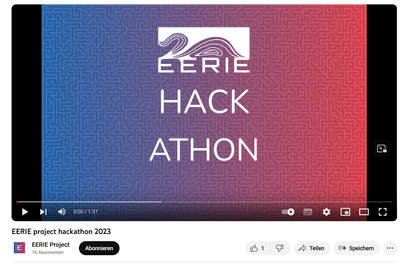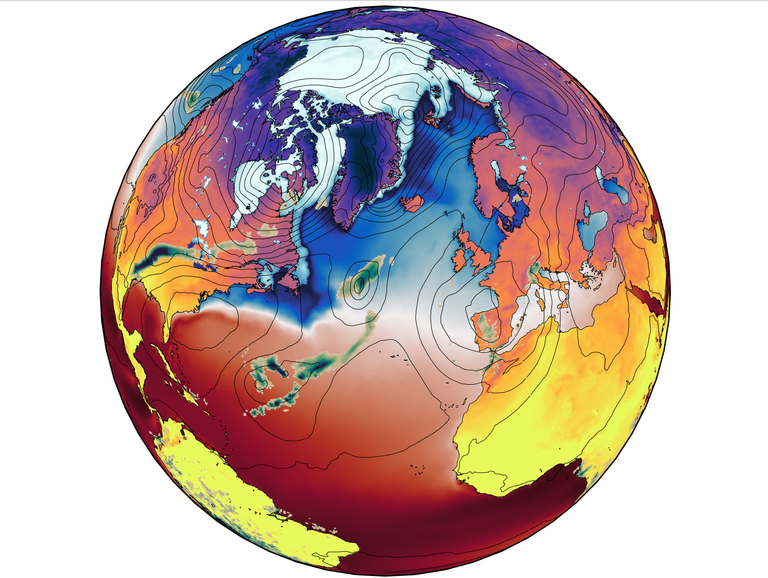20.11.2023
As part of work package 3 of the EU project “Eddy Rich Earth System Models (EERIE)”, DKRZ and the Met Office are jointly responsible for the data management of the model outputs of the simulations carried out in the project.
After the welcome and a presentation of the project by its scientific leader, Prof. Thomas Jung (AWI), the leaders of each work package (WP) informed about the current status. Fabian Wachsmann (DKRZ) and the co-leading colleague from the British Met Office (MO), Jon Seddon, presented the progress in WP3. The integration of new tools into data processing workflows and easier access to EERIE data were highlighted. For Dr. Iuliia Pokova, who joined the EERIE project team at DKRZ on October 1, 2023, it offered a perfect opportunity to get to know the project partners and gain a precise understanding of the project goals.
In a break-out group for WP3, the need for a common data access tool across data centers was specified and the significant importance of data-proximate processing resources for all project participants was highlighted. From the HPC resources approved at DKRZ for EERIE simulations, EERIE provides computing time and storage for data analysis for all project participants.
 The last two days of the project meeting were used for the first EERIE hackathon. A video on the project's YouTube channel gives a visual impression: https://www.youtube.com/watch?v=Pa4P-YbjzV8
The last two days of the project meeting were used for the first EERIE hackathon. A video on the project's YouTube channel gives a visual impression: https://www.youtube.com/watch?v=Pa4P-YbjzV8
The first EERIE data were jointly examined and analyzed in topic-related working groups. For this purpose, all project partners provided data from the control experiments of their various Earth system models (i.e. ICON-ESM-ER (MPI-M), IFS-FESOM2-SR (AWI), EC-Earth3P-VHR (BSC), HadGEM3-GC5 (MO) and IFS-AMIP (ECMWF), which lasted up to 20 years per simulation. Data analysis was performed on the DKRZ supercomputer Levante and on the Met Office system JASMIN. A four-person DKRZ support team, consisting of Fabian Wachsmann, Dr. Iuliia Pokova, Dr. Florian Ziemen und Kameswarrao Modali, were available to answer questions directly, provide assistance and thus contribute to the success of the hackathon.
In advance, the participants had the opportunity within the voluntary “First EERIE Figure” contest to create plots in order to gain a preliminary understanding of data access (Figure 1 shows the winning entry).

Figure 1: Simultaneous visualization of sea surface temperature, near-surface air temperature over land, sea ice concentration, geopotential height at 850hPa (black contours) and rain summed over 6 hours (15-100 mm/day) for a point in time in one of the first EERIE simulations (Copyright : Matthias Aengenheyster).
As a result of the hackathon, participants can now “track” the ocean eddies in the brand new EERIE data using software and monitor their development. A main goal of the project is to identify these vortices in simulations that follow physics correctly. The necessary high-resolution experiments, which cover a hundred model years, are being carried out for the first time with the support of the DKRZ team on its Levante supercomputer and are intended to contribute to a better understanding of the role of ocean eddies in the climate system.
During the hackathon, all participants learned to use resources on the supercomputers such as Levante, process EERIE data and apply their own tools to this data. The hackathon was therefore a complete success and the project community is already looking forward to taking part in the next hackathon together with the NextGEMs project, probably in March 2024.
